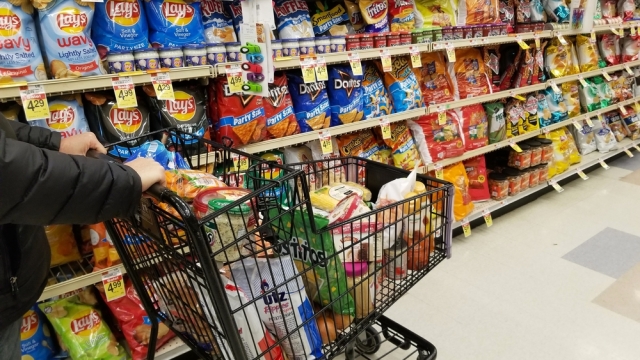The price of goods and services increased 3.1% in the 12-month period ending in January, according to data released Tuesday by the Bureau of Labor Statistics.
That's down from the 3.4% inflation rate for the 12-month period ending in December. It is also far below the inflation rate of 9% in June 2022.
But it still remains slightly above the Federal Reserve's target for the annual inflation rate. Fed Chair Jerome Powell said the Federal Reserve is targeting an annual inflation rate of 2%. In an effort to reduce inflation, the Fed has increased interest rates to the highest levels since the early 2000s.
"All in all, this is a pretty bad report," said Daniil Manaenkov, an economic forecaster with the University of Michigan. "The bad things in the report is that we were expecting core inflation, that is prices without energy and food, to keep decelerating. That did not happen."
While skyrocketing shelter costs are still driving persistent inflation, Manaenkov says the Federal Reserve will focus on "super core" numbers, which exclude volatile food, energy, and shelter prices, to guide its interest rate decisions.
"Your haircuts, your car repair, your insurance is also at the strongest reading in a while," he said. "Those services have higher weight in the metric that the fed cares about."
But Erik Lundh, the principal economist with the think tank, the Conference Board, says the economy has seen a lot of progress on inflation over the past six months.
"You're not going to see home runs every time an inflation number comes out. The number that came out today wasn't alarming. The year-over-year numbers were about where they were last month."
After a period when food prices increased by more than 10% a year, food purchased at grocery stores is about 1.2% more expensive than a year ago. Food purchased to be consumed away from home, like at restaurants, is 5.1% more expensive than a year ago.
Some common grocery staples, such as milk, coffee, seafood and butter were cheaper this January compared to last January.
Energy costs also were 4.6% less to start 2024 than at the start of 2023. This was mostly due to gasoline being about 6.6% cheaper than a year ago.
But Heather Boushey, who serves on the president's Council of Economic Advisors, pointed out some good news in the report.
"Eggs, poultry, dairy products, also used cars, those prices came down, so there are a number of places where consumers are seeing that extra bit of breathing room," she told Scripps News.
SEE MORE: Car insurance premiums rise 26% in 2024, report finds
The biggest driver keeping inflation elevated is shelter, which was up 6% last month compared to January 2023.
Another large culprit for rising inflation: motor vehicle insurance. There was an increase of over 20% in motor vehicle insurance rates in the past year.
The consumer price index weighs the costs of goods based on their importance. Items like food, shelter and energy tend to be weighted more heavily.
The new data also suggests that wage increases have nearly kept pace with inflation. Average weekly wages increased 2.9% in the 12-month period ending in January.
One reason weekly wages haven't quite kept up with inflation is Americans are working fewer hours per week, according to government data. The average American employee worked 34.1 hours in January 2024, which is down by 0.5 hours compared to January 2023.
Average hourly wages more than stayed ahead of the inflation rate, increasing 4.4% over the last year to $34.55 per hour, the BLS said.



